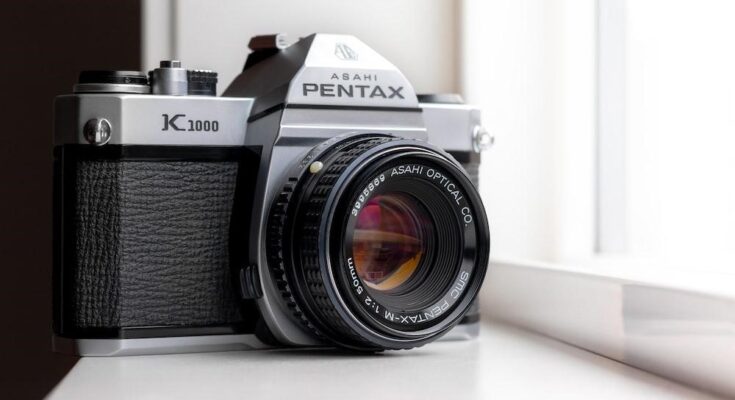Product photography in e-commerce can fascinate your customers or make you seem unimportant. These images have the power to determine your company’s future, turning into the filter through which potential clients view your products and creating that crucial initial impression. Uniqueness is essential for success in today’s congested market.
To draw customers to your business, your product photography must be distinctive and develop into your hallmark look. They can come to life with the help of a carefully composed product shot, which also communicates the qualities and soul of your brand.
But taking creative product photographs is a difficult task that needs a creative mind, technical proficiency, and familiarity with camera magic. We’ll review some ideas and techniques for producing unparalleled product photography to make your goods stand out.
1. Choose The Right Camera And Lens
The gateway to unique product photography is the right gear and settings, though you don’t need a fancy camera to capture stunning product photos. High resolution is the game’s name, and a DSLR or mirrorless camera with a versatile macro lens fits the bill perfectly with a sharp lens and a wide aperture.
Even your smartphone can work magic if you wield it skillfully with good lighting and a keen eye for composition. Yet, if you seek the pinnacle of quality, finding a professional studio is the perfect solution for product photography.
Invest in the right equipment, including cameras, lenses, tripods, lighting, and artistic software that breathes life into your shots. A sturdy tripod steadies your vision, while lighting equipment creates shadows and highlights.
For depth and focus, use an aperture of f/8 and f/16 and determine shutter speed by the illumination and the subject’s rhythm. For unique product photography, the fusion of equipment and settings elevates your visuals.
2. Set Up A Good Lighting Setup

Lighting helps create a mood and atmosphere in every product photo, so use natural light for outdoor shots and artificial lights when indoors.
Natural light is a charm for smaller products like jewelry, cosmetics, or gadgets. Set the stage near a large window, and add diffusers or reflectors to soften and sculpt the light to perfection. Yet, if you need artificial lighting, use softboxes and umbrellas to diffuse the light on your products and reflectors to bounce the light back.
In pursuit of precision, studio strobes can deliver powerful, controlled light that leaves no detail in the shadows. This artificial light complements the natural world, adding artistry and control to your visual tale.
Experiment with different lighting because different products require varied lighting scenarios. Sculpt the light to dance around the contours of each shape, accentuating their unique beauty. Depth and contrast with multiple light sources make your product photography captivating, while shadows add mystery, highlight, draw attention, and create a masterpiece.
3. Use A Plain Background
Try visual storytelling, using props and backgrounds to add depth and context to every product photograph. A plain background is the perfect canvas for your product to stand out, with a clean, minimalistic white backdrop drawing the eye to your offering and capturing your customers’ attention.
Should your artistic soul yearn for more, textured backgrounds are your artistic muse as they add flair to your compositions with different colors and materials.
While keeping your product the main emphasis, combine different textures, colors, and materials to create compositions that attract the senses.
Let the props and backgrounds complement without overshadowing your offering as you seek to strike the perfect balance of compositions that speak volumes about your brand. Props and backgrounds add context and depth to your photos while ensuring your product always takes center stage.
4. Take Multiple Shots From Different Angles
Angles make each shot more original and creative, so take many photos from various angles. These angles provide various alternatives as you edit later to create the ideal visual story. Uncover your product’s front, back, side, and top features, each perspective giving a fresh dimension and revealing subtle features and nuances. Images from above, underneath, and unique angles help your goods stand out.
Explore your product from every viewpoint, including those never used before, and you’ll take pictures that serve as the backdrop for your products. Your product photography develops into a captivating journey with various views, where each picture reflects the essence of your company.
5. Edit Your Photos
In product photography, photo editing gives your artistic creations new life, with several photo-editing programs helping to improve and change your pictures.
Use professional photo editing software like Adobe Photoshop and Lightroom to improve the image’s brightness, contrast, and saturation. Find free software to edit your images without being a great photographer; picture editing is not just for professionals.
These tools will give your pictures a polished, expert look while highlighting all the details and balancing the colors. Experiment with photo editing, adding texts and visuals to make your product photos more aesthetically appealing. You can draw attention to critical aspects of your product with an easy-to-read typeface and straightforward images like arrows or circles.
Bottom Line
Product photography acts as a bridge between your brand and the preferences of your target market and is the key to winning over your clients’ hearts. Each shot features the ideal angle, the interaction of light and shadow, and the harmony of colors that you can quickly produce.
Using these tips and tricks, you can take distinctive and expert-looking product images to promote more sales. A glance at the pictures of your products can convince customers to buy or send them looking elsewhere.




